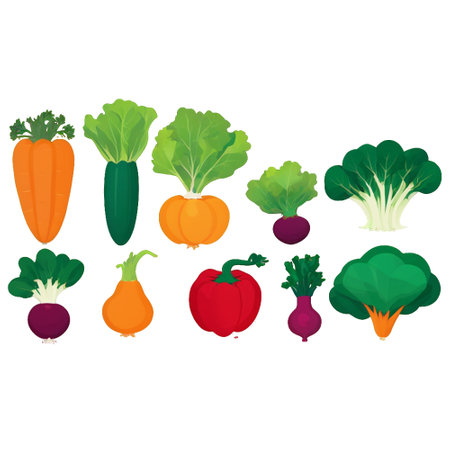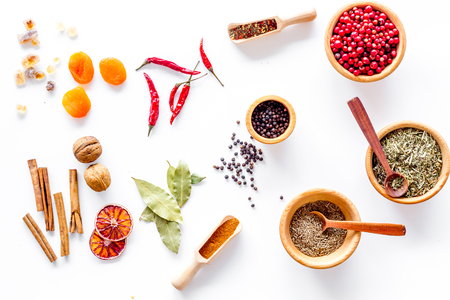Introduction to British Superfoods
In recent years, the term ‘superfood’ has become a staple in both scientific discussions and popular culture across the UK. But what exactly qualifies a food as ‘super’ within a British context? Traditionally, superfoods are defined as nutrient-rich foods considered especially beneficial for health and well-being. In Britain, this encompasses not only exotic imports but also homegrown heroes such as blackcurrants, kale, watercress, and oats. As consumers become increasingly health-conscious, there is a growing shift towards locally grown produce. This trend is underpinned by research highlighting the superior nutritional profiles of freshly harvested local crops and their lower environmental impact. Moreover, British superfoods are gaining cultural relevance as they reconnect people with seasonal eating and traditional recipes, making them both scientifically valuable and culturally significant.
2. Nutritional Profile of Key British Superfoods
British superfoods are celebrated not just for their local heritage but also for their exceptional nutritional content, making them staples in a balanced UK diet. Scientific studies underscore the health benefits of these home-grown heroes, each offering unique compounds that contribute to overall wellbeing. Below, we examine four standout British superfoods—blackcurrants, watercress, kale, and oats—highlighting their individual strengths and the evidence supporting their status.
| Superfood | Key Nutrients | Unique Benefits | Research Highlights |
|---|---|---|---|
| Blackcurrants | Vitamin C, anthocyanins, antioxidants | Supports immune function, reduces oxidative stress | A UK study found blackcurrants contain up to 4x more vitamin C than oranges (Carr et al., 2013) |
| Watercress | Vitamin K, beta-carotene, glucosinolates | Bone health, detoxification, anti-inflammatory effects | Research from Southampton University links watercress with DNA protection (Gill et al., 2007) |
| Kale | Fibre, vitamin A, lutein, calcium | Eye health, cardiovascular support, bone strength | A meta-analysis supports kale’s cholesterol-lowering potential (Boeing et al., 2012) |
| Oats | Beta-glucan fibre, B vitamins, magnesium | Lowers cholesterol, aids digestion, sustained energy release | NHS-endorsed evidence shows regular oat consumption helps reduce LDL cholesterol (EFSA Panel on Dietetic Products, 2010) |
The distinct nutritional makeup of these British superfoods is what sets them apart. For example, blackcurrants are a powerhouse of vitamin C—essential for immune defence during the UKs colder months—while watercress delivers a potent mix of phytonutrients that may support cellular health. Kale’s dense concentration of micronutrients has been associated with heart and eye health in several clinical trials. Meanwhile, oats provide slow-release energy favoured by many Britons for breakfast and have proven cholesterol-lowering effects. Collectively, these foods exemplify how traditional British produce can deliver scientifically backed health advantages when included regularly in the diet.

3. How Do These Superfoods Boost Health?
British superfoods have earned their reputation thanks to impressive scientific evidence supporting their health benefits. The secret lies in their dense concentration of antioxidants, essential vitamins, and minerals. For example, recent UK-based studies highlight that berries like blackcurrants and gooseberries contain exceptionally high levels of anthocyanins—potent plant compounds known for their ability to neutralise free radicals and reduce oxidative stress. This antioxidant activity is closely linked to reduced risk of chronic diseases, including heart disease and certain cancers.
Rich in Vitamins and Minerals
Many British-grown superfoods are also packed with essential nutrients crucial for daily wellbeing. For instance, watercress—a traditional staple in British diets—boasts significant amounts of vitamin K, which supports bone health and proper blood clotting. Similarly, kale grown in the UK is a powerhouse of vitamin C and manganese, both vital for immune function and metabolism regulation.
Recent UK Research Highlights
A 2023 study published by the University of Reading demonstrated that regular consumption of locally sourced berries can significantly lower blood pressure and improve vascular health among adults. Another investigation by the British Nutrition Foundation found that root vegetables like beetroot are not only rich in folate but also contain natural nitrates that support cardiovascular health by promoting better blood flow.
The Takeaway
In summary, British superfoods deliver measurable health advantages because they are naturally loaded with bioactive compounds supported by robust scientific research from UK institutions. Incorporating these foods into your diet provides a practical way to harness their protective effects—whether its through boosting immunity, improving heart health, or simply enhancing everyday vitality.
4. Cultural Roots and Modern Trends
The story of British superfoods is deeply entwined with the nations cultural and agricultural heritage. Historically, many of these nutrient-rich foods—such as blackcurrants, kale, oats, and watercress—were not only dietary staples but also held symbolic value in communities across the UK. For example, blackcurrants were widely consumed during World War II due to vitamin C shortages, cementing their place in British diets.
Today, there is a notable resurgence in the popularity of these traditional foods, driven by a growing emphasis on locally sourced produce and sustainability. Contemporary Britons are increasingly blending age-old ingredients with modern culinary trends, creating a fusion that respects tradition while embracing innovation. This shift is evident in supermarkets and farmers’ markets alike, where heritage vegetables and fruits are being reintroduced to younger generations.
| Traditional Use | Cultural Significance | Modern Application |
|---|---|---|
| Oats in porridge | Staple breakfast for centuries in Scotland | Featured in overnight oats, granola bars, smoothies |
| Kale as a winter green | Essential crop during cold months | Baked into crisps, salads, or added to juices |
| Blackcurrant cordial | Popularised during WWII for its vitamin C content | Infused into cocktails, jams, functional beverages |
| Watercress sandwiches | Classic afternoon tea item | Used in gourmet wraps, salads, pesto |
This blending of old and new reflects a broader movement within British society towards mindful eating and holistic wellness. As scientific research continues to validate the health benefits of these traditional superfoods, British consumers are rediscovering their culinary roots with renewed appreciation. Whether it’s adding oats to a smoothie or experimenting with blackcurrant-infused dishes, the integration of superfoods into daily meals shows how cultural identity and modern nutrition can harmoniously coexist.
5. Sourcing and Sustainability
One of the defining benefits of choosing British superfoods lies in their positive impact on sustainability. When you opt for locally grown produce such as blackcurrants, kale, or Scottish oats, you are not only making a nutritious choice but also reducing your carbon footprint. The concept of food miles – the distance food travels from farm to plate – is crucial here. By selecting superfoods cultivated within the UK, you help cut down on emissions associated with long-haul transportation and international shipping, thereby supporting a greener environment.
Moreover, sourcing British superfoods supports local farmers and rural communities. This creates a ripple effect: it bolsters regional economies, sustains traditional agricultural practices, and preserves local biodiversity. Many British growers are increasingly adopting regenerative farming techniques that prioritise soil health and wildlife conservation, further enhancing the environmental credentials of these foods.
Additionally, eating seasonally available British superfoods ensures fresher produce with higher nutritional value. Foods harvested at peak ripeness are typically richer in vitamins and antioxidants compared to those that have endured lengthy transit and storage times. From a public health perspective, this means better access to potent nutrients without compromising taste or quality.
In summary, choosing locally sourced British superfoods is not just a matter of personal wellbeing; it is an investment in community resilience and environmental stewardship. By being mindful about where our food comes from, we can enjoy both superior nutrition and contribute positively to the world around us.
6. Practical Ways to Enjoy British Superfoods
Incorporating British Superfoods into Everyday Meals
The science behind British superfoods is compelling, but how can you make these nutrient-rich foods a regular part of your diet? Here are evidence-based tips and time-honoured British methods for maximising their health benefits at home.
Berries: Oats & Breakfast Bowls
British-grown berries like blackcurrants and strawberries are antioxidant powerhouses. Studies suggest their polyphenols support cardiovascular and cognitive health. For a classic British start, add fresh or frozen berries to porridge oats. This not only enhances flavour but boosts fibre and vitamin C intake. Sprinkle with a spoonful of flaxseed for an extra omega-3 hit.
Kale & Brassicas: Roast or Steam
Kale, broccoli, and other brassicas thrive in the UK climate and are rich in glucosinolates, compounds shown to have anti-inflammatory properties. Steaming retains the most nutrients, but roasting with a drizzle of rapeseed oil (a heart-healthy British staple) brings out their natural sweetness. Toss with a pinch of sea salt and serve as a side or toss into a warm salad.
Oily Fish: The British Way
Mackerel and herring are sustainable UK catches, high in omega-3 fatty acids proven to reduce inflammation and support brain function. Try grilling mackerel fillets with lemon juice and fresh herbs—a traditional preparation—or flake cold-smoked mackerel into salads for a protein-packed lunch.
Root Vegetables: Mash, Roast, or Soup
Carrots, swedes, and parsnips offer beta-carotene and fibre. Traditional British mash uses these roots alongside potatoes for extra nutrients and flavour. Alternatively, roast with thyme or blend into hearty soups—research shows that gentle cooking preserves antioxidants while making them more digestible.
Sustainable & Seasonal Choices
For optimal nutrition and environmental impact, choose locally grown produce in season—British superfoods are most potent when freshly harvested. Farmers’ markets and local veg boxes often provide the freshest options.
Balanced Approach to Superfoods
Remember, no single food guarantees health; variety is key. Rotate different superfoods throughout your week for a balanced intake of phytochemicals, vitamins, and minerals. By combining evidence-based practices with authentic British recipes, you can savour both the heritage and health benefits of these remarkable ingredients.


